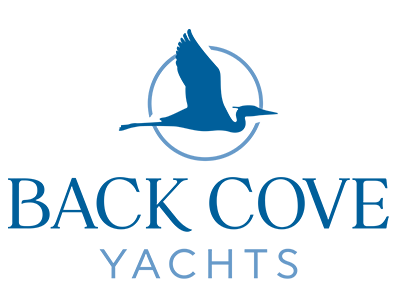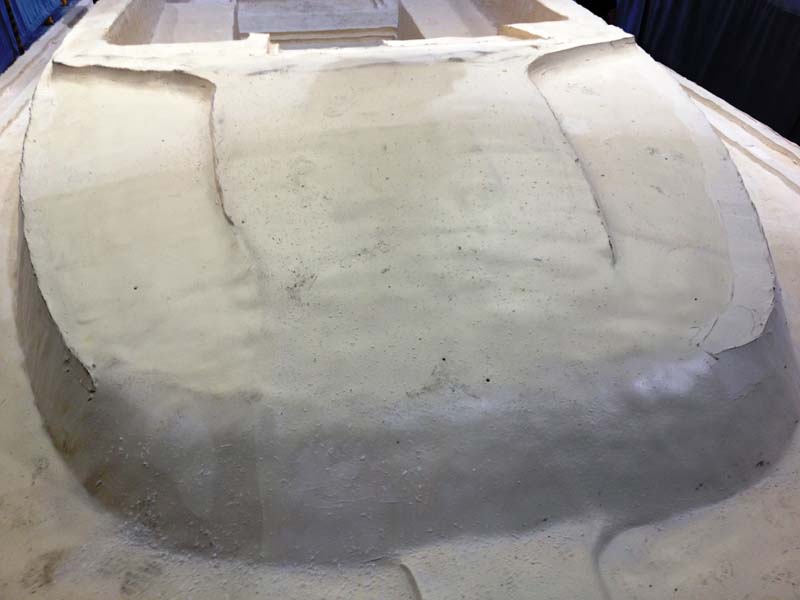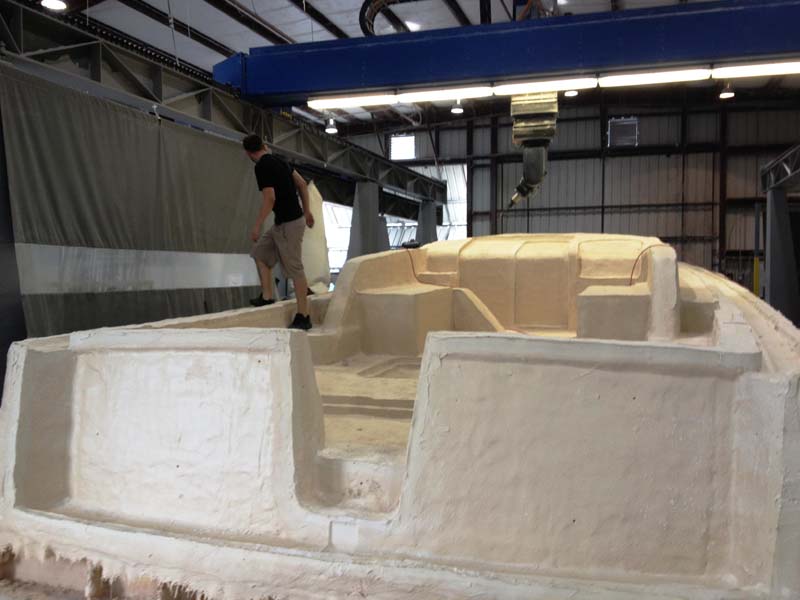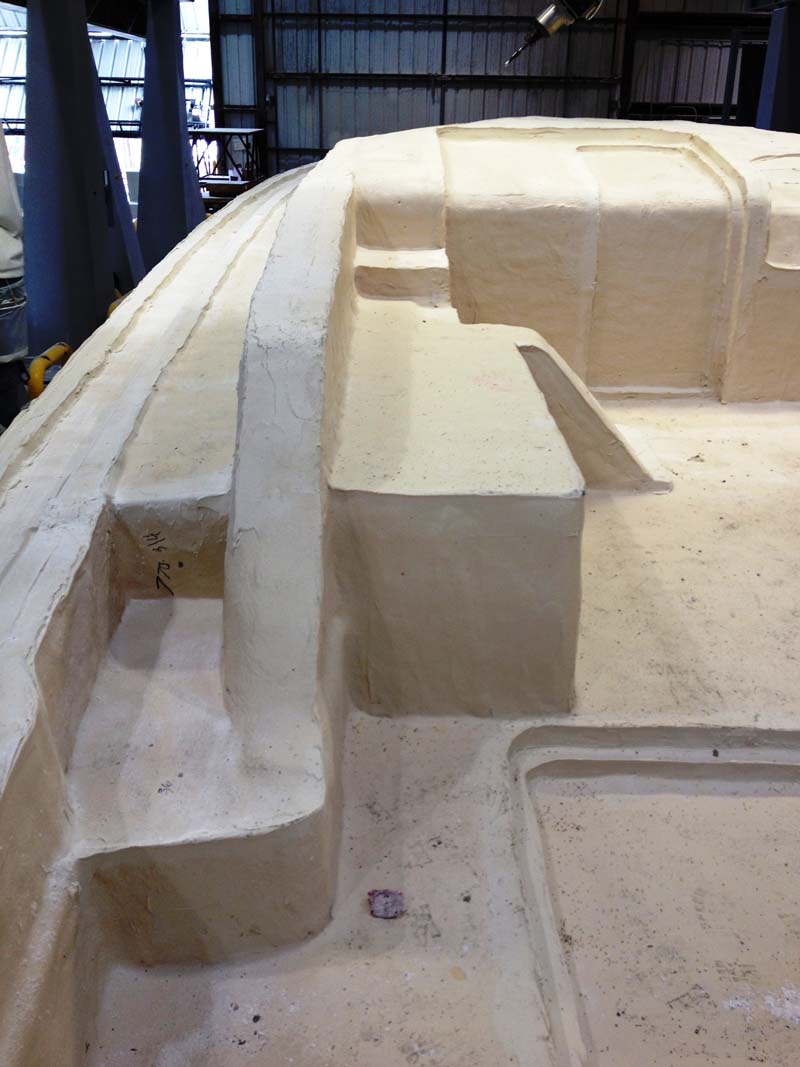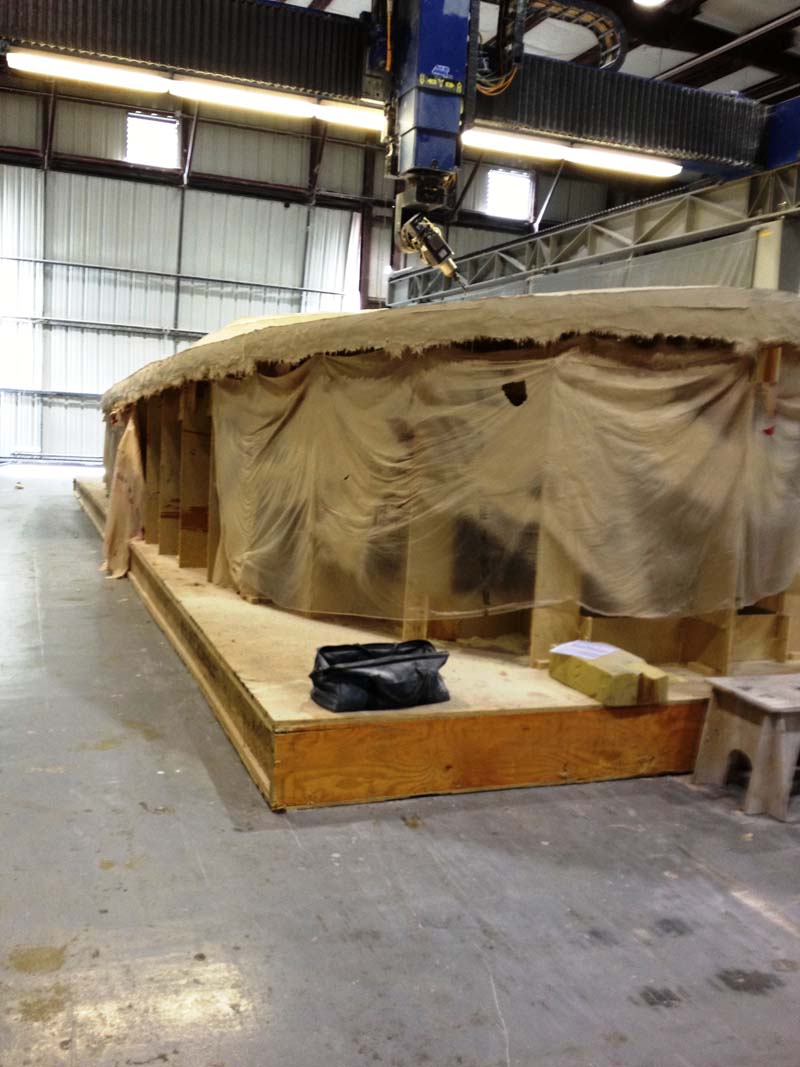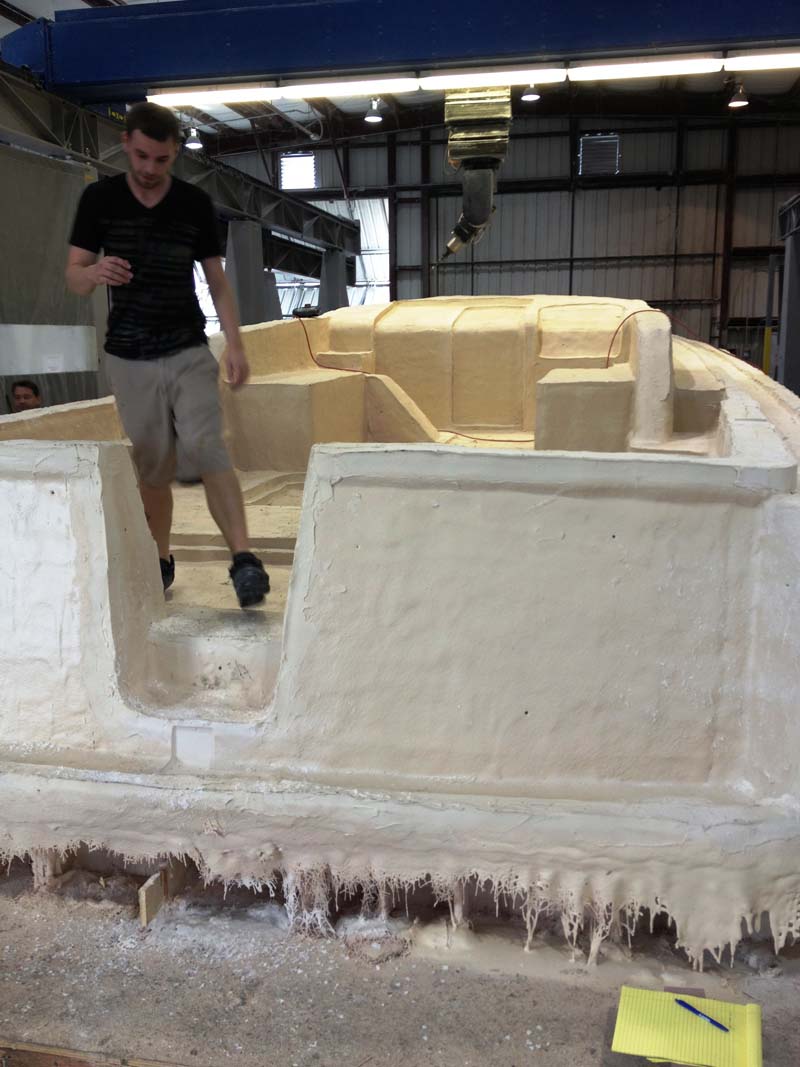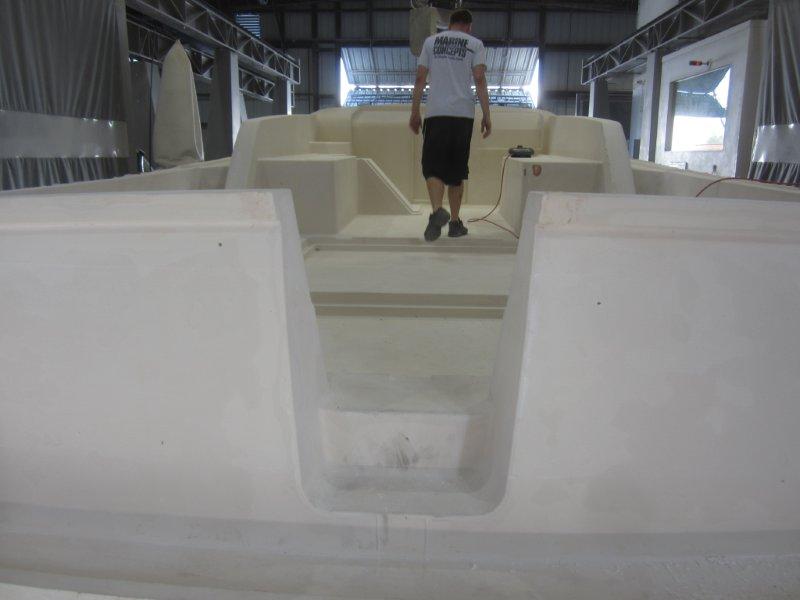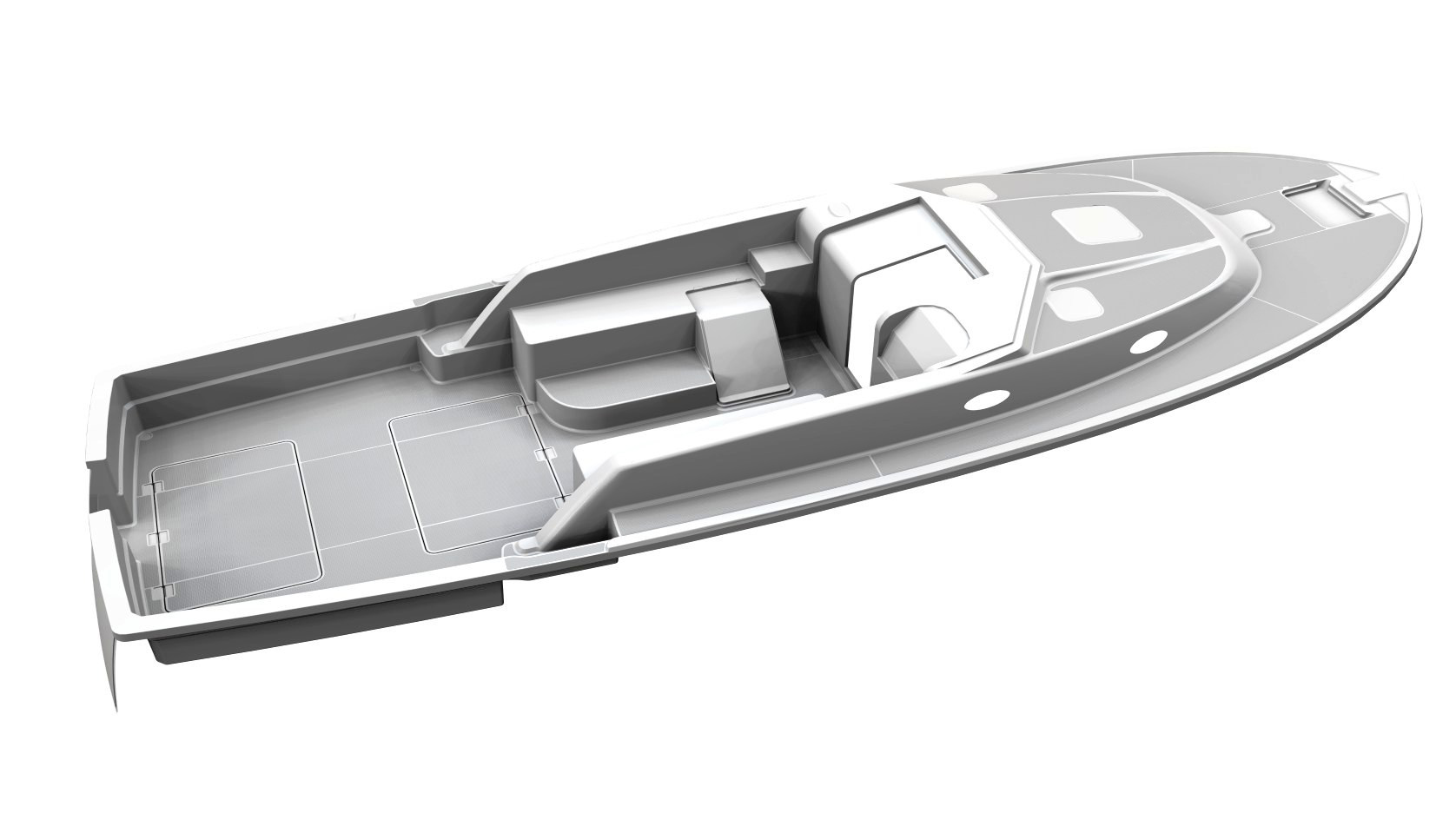In early January, Kevin Burns, Vice President of Design and
Product Development for Back Cove Yachts took a visit to Maine Concepts in Cape
Coral, Florida to check on the mold for Back Cove’s newest model – the Back
Cove Downeast 37. Marine Concepts specializes in composites tooling and
fiberglass parts. Before the mold can be built, Marine Concepts builds a full
sized pattern (often called a “plug”) to the precise shape and finish of the final
part.
The plug is made of a structure covered in foam; a robotic
router shapes the foam based on 3D design files of the Downeast 37 sent to
Marine Concepts from the Back Cove Design Team. The robot first carves a rough
foam shape that is close to the final surface of the plug.
After the foam is rough shaped, Technicians reinforce the foam
and apply a thick layer of tooling paste, which hardens into a material which
the router can then machine to the final surfaces – with all the details of the
actual part. Above, in the very top of this photo, you can see the robot in
action.
Once the dry tooling paste has been applied to the plug, it
is ready for the final pass of the robotic router. The final machining process
is referred to as the “finish mill” stage and takes the router about 10 days to
complete.
As you can see from the photo below, the plug is strong enough to walk on. Also note the tooling paste that has been applied – the plug appears to be covered in a layer of clay.
After finish mill, the plug moves to another building where
workers apply finish primer, hand sand and polish all the surfaces until they
are shiny. They will also glue down the sheets of “anti-skid” texture on all of
the sole surfaces before they begin to build the mold.
Below is a rendering of the finished part! The mold should
be arriving in Maine by Spring and the first Downeast 37 hull should be launched
by mid-summer. For more information on the Back Cove Downeast 37, visit the Back Cove website.
